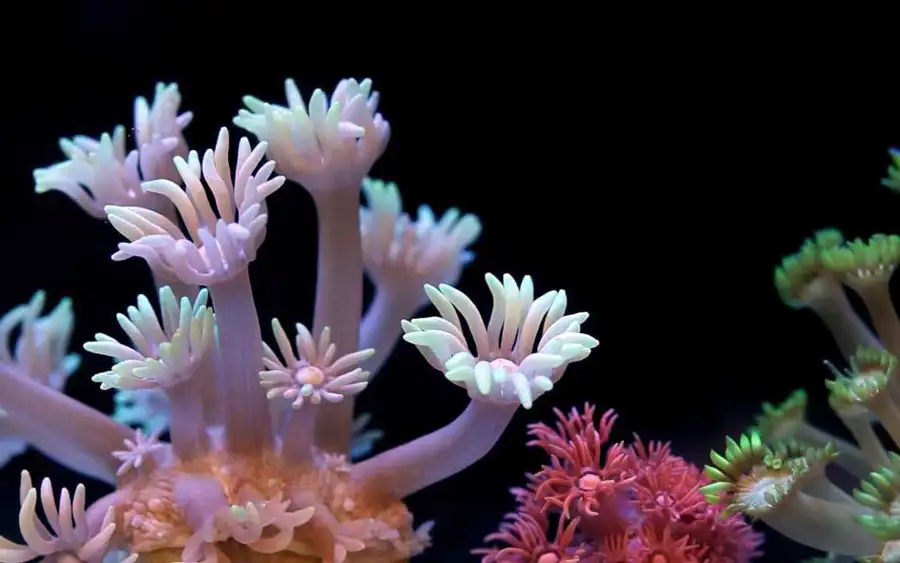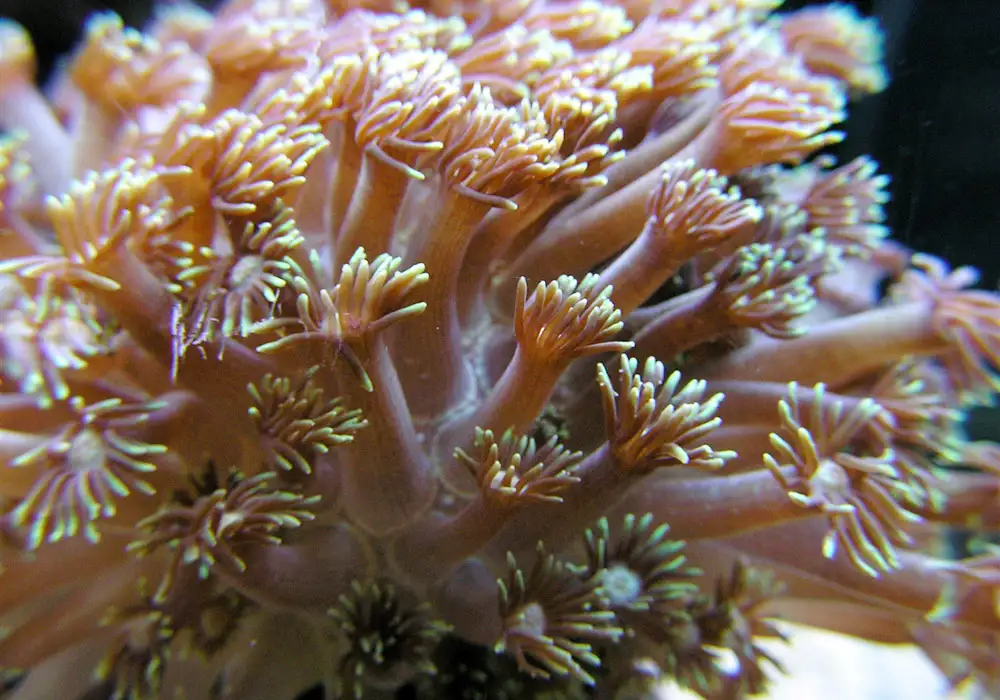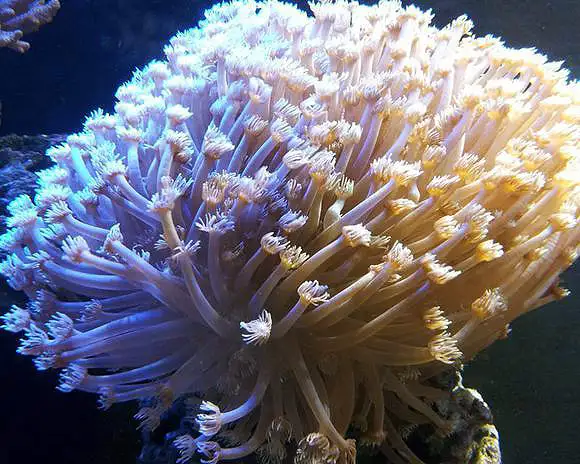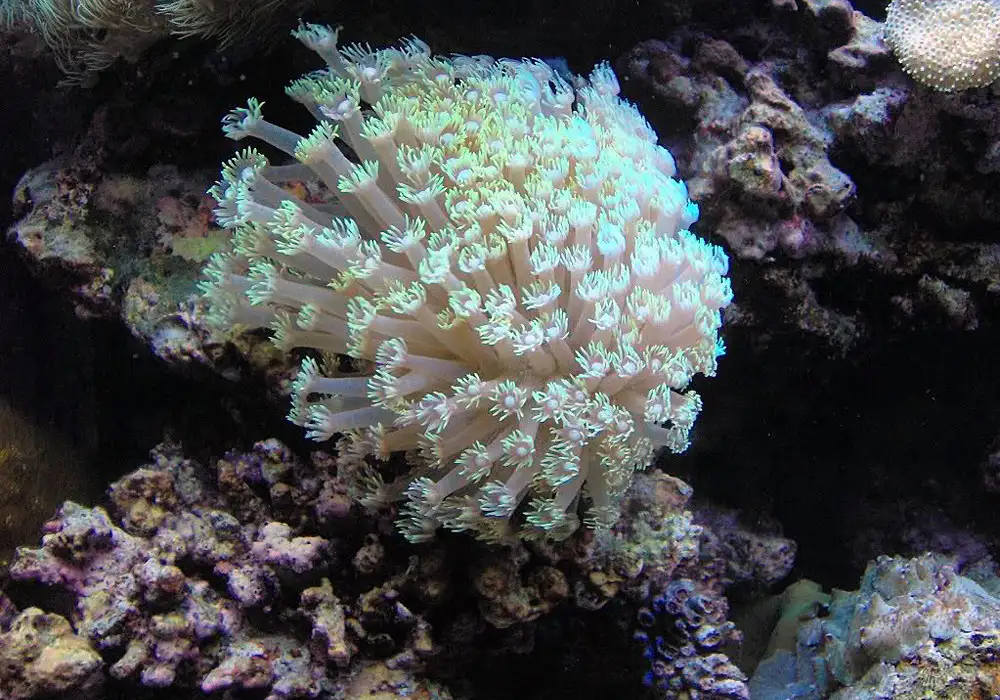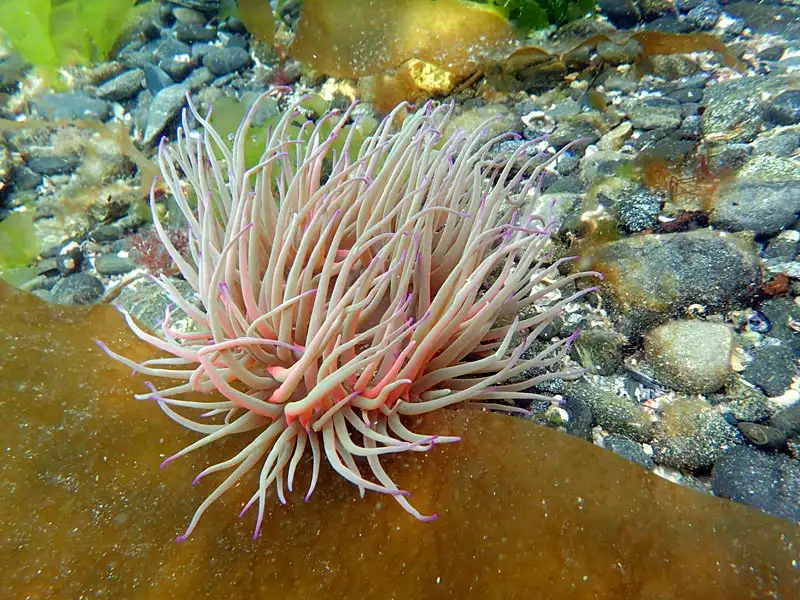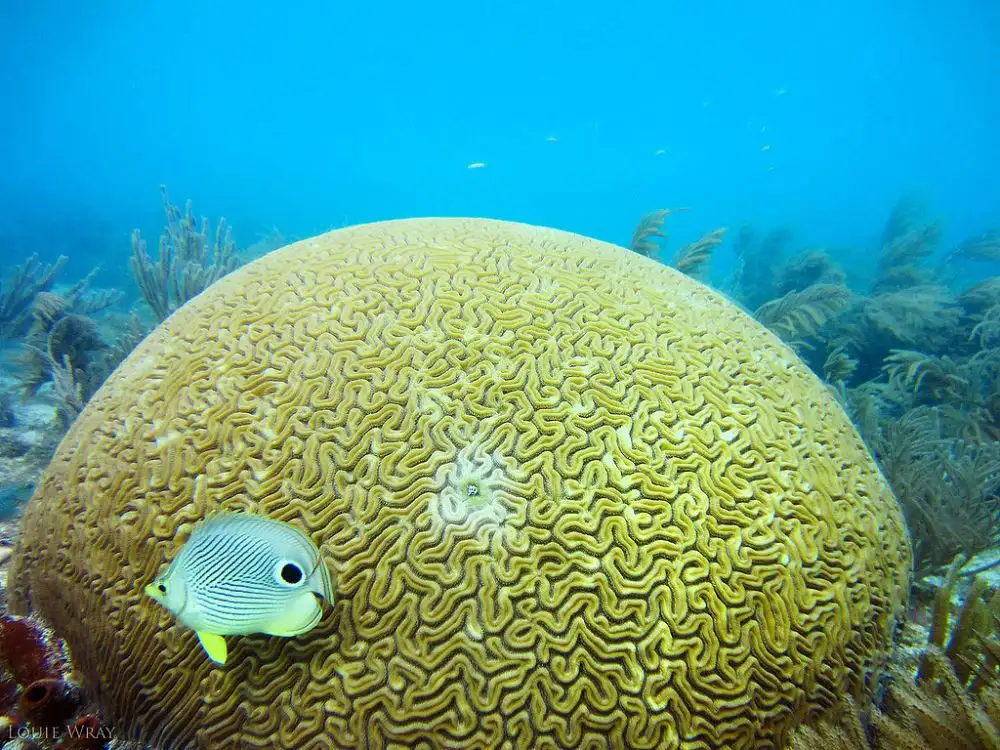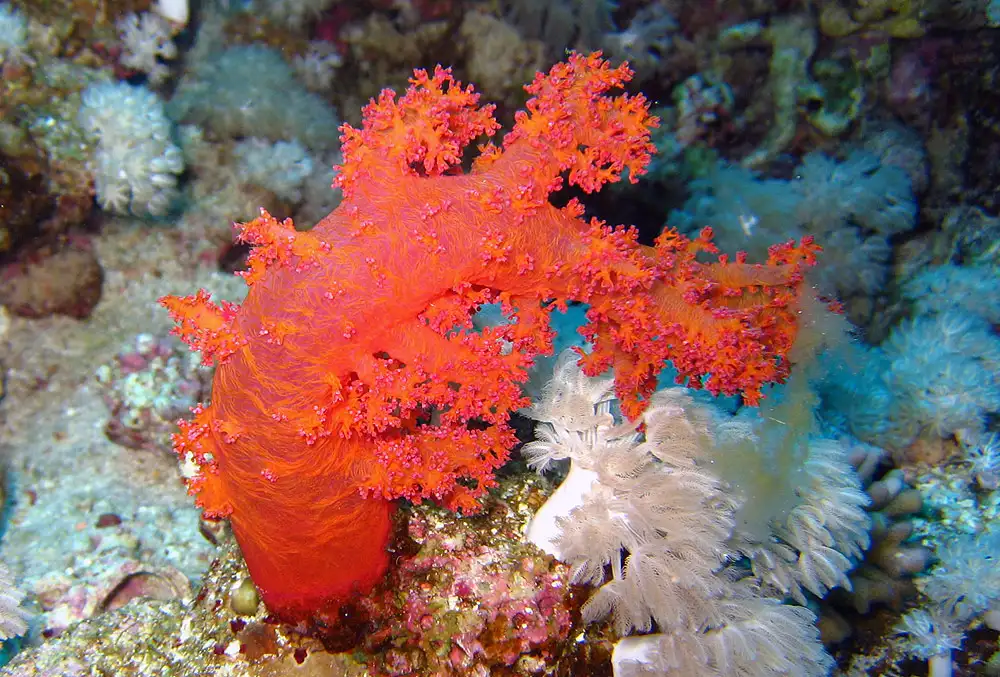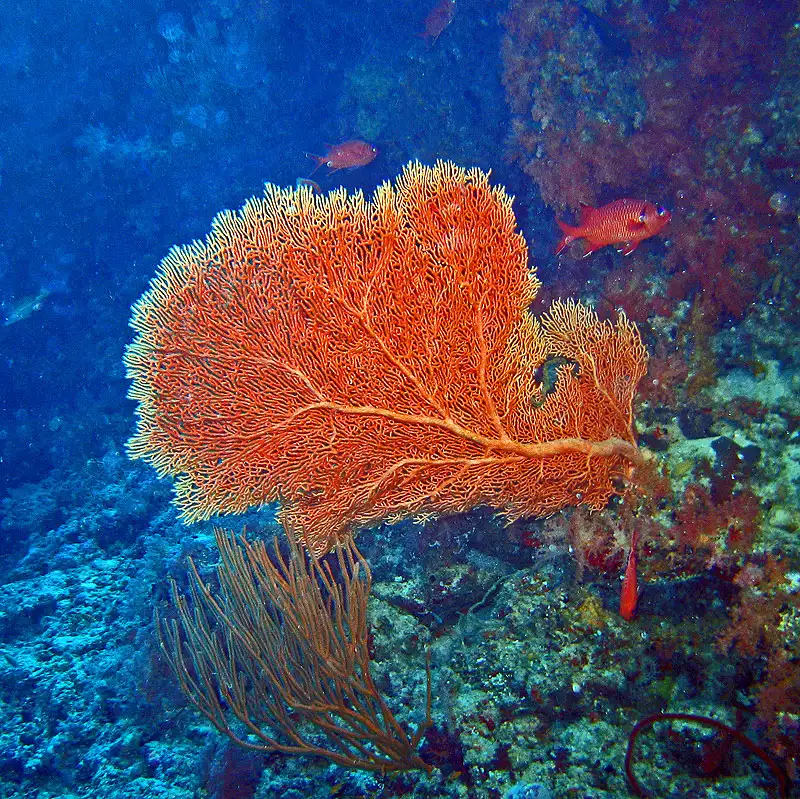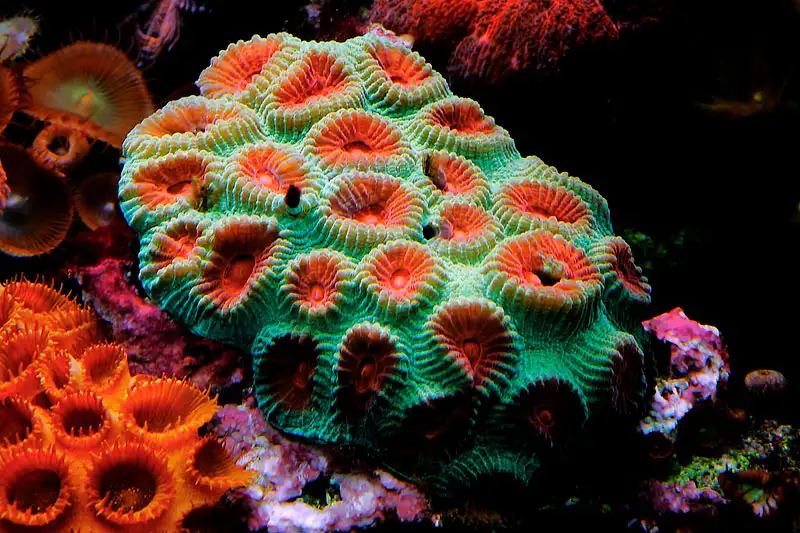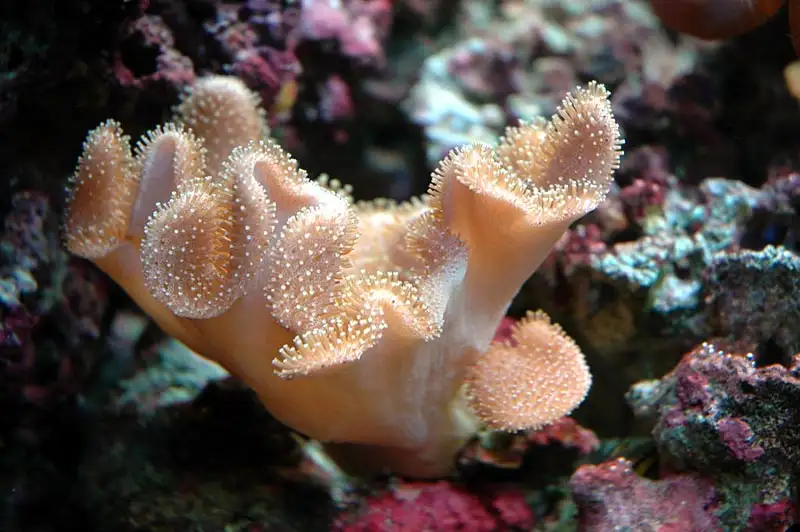Lobed Flowerpot Coral
IUCN
LCBasic Information
Scientific classification
- name:Lobed Flowerpot Coral
- Scientific Name:Goniopora lobata
- Outline:Echinodermata
- Family:Poritidae Goniopora
Vital signs
- length:Colony diameter 20–60 cm; up to 1 m+
- Weight:Varies with colony size; no single figure
- lifetime:Long‑lived reef builder (years to decades)
Feature
Daytime mass polyp extension; photosymbiosis plus particulate feeding; massive to hemispherical growth.
Distribution and Habitat
Indo‑Pacific lagoons/back‑reefs/upper outer reefs over sand/rubble or hard substrata (3–25+ m).
Appearance
Polyps with long stalked tentacles (~24 per polyp); green to brown‑green colours; retract to reveal perforated skeleton.
Details
Goniopora lobata is a classic “flowerpot coral” in family Poritidae (order Scleractinia). Its polyps bear long, flower‑like tentacles that extend en masse by day, giving the colony a blooming appearance. It hosts zooxanthellae (Symbiodiniaceae) for photosynthesis and also captures micro‑zooplankton/particulates.
Ecology & Biology
Nutrition: primarily photosynthetic; nocturnal particulate/zooplankton feeding supplements energy intake.
Growth form: colonies are massive to hemispherical with rounded lobes.
Reproduction: sexual broadcast spawning/planulation plus asexual budding; colonies are multi‑year.
Identification
Individual polyps have long stalked tentacles; a common genus‑level cue is ~24 tentacles per polyp (vs. ~12 in Alveopora). Corallites are closely spaced and relatively even; colours include pale to bright greens, brown‑greens, grey‑browns, sometimes with fluorescent green oral discs. Polyps retract at night or when disturbed, exposing a perforated skeletal surface.
Colony size & Longevity
Colony diameter: typically 20–60 cm; up to 1 m+ on healthy reefs.
Tentacle length: ~1–5 cm depending on light/flow.
Life: long‑lived reef builder (years to decades).
Range & Habitat
Widespread across the tropical Indo‑Pacific (Indian Ocean to W. Pacific, SE Asia, northern Australia), on lagoons, back‑reefs and upper outer‑reef zonesover sand/rubble or hard substrata at ~3–25+ m. Prefers moderate light and gentle–moderate flow; sensitive to persistent heavy sedimentation.
Threats & Conservation
Thermal stress & bleaching during heatwaves.
Sedimentation/pollution that reduces photosynthesis and clogs polyp mouths.
Physical damage from storms, anchoring, trampling and unsustainable collection.
IUCN: sources vary; for consistency here it is marked as Not Evaluated (NE). Management priorities include protecting healthy reef tracts, managing nutrients/sediments and regulating tourism/trade.
FAQ
Q1. How to tell it from Alveopora? Goniopora polyps typically show ~24 tentacles, whereas Alveopora often has ~12.
Skeletal pore spacing and oral disc morphology also differ.
Q2. Why does it “bloom” by day and retract at night? Daytime expansion optimizes photosynthesis and feeding; retraction occurs at night or under stress.
Q3. Is it sediment‑tolerant? It prefers stable water quality and moderate flow; chronic heavy sedimentation is harmful.
Q4. Common colours? Pale/bright greens, brown‑greens and grey‑browns; fluorescent green oral discs occur.

